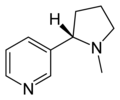Ticks and basset hounds

Our 1 year old basset hound Minnie is a tick "magnet" . She goes for a walk everyday in a grassy/wooded area near our home and likes to check out all manner of rodent holes and such. If we don't treat her with a flea and tick medication (see below) she comes home with ticks attached to her head or neck area. Spring and early summer are peak times where we live but others may see peak tick activity in mid to late summer. Ticks (left) are related to spiders. Unlike spiders, however, ticks are ectoparasites of vertebrate animals. This means that they feed o n the blood of animals ranging from snakes to mammals, including us and our pets. Like other blood-feeding invertebrates, for example mosquitoes, female ticks must get a blood meal in order to lay healthy eggs. Also like mosquitoes, ticks can transmit some important human and pet diseases while feeding. Lyme Disease is spread by the bite of ticks as is Rocky Mountain Spotted Fever and many others. Not all ticks carr




